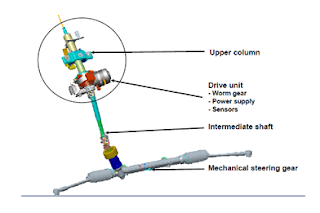Silicone Rubber Molding is a simple, accurate and forgiving process of
making prototype parts. SRM is also the cheapest and fastest process to produce
relatively small volume parts. The process start with a "Master Part" preparation.
This part can be encapsulated with molding material and then many parts can be
made from the resulting negative. This master can be encapsulated by supporting
it on spacers and enclosing it in a retaining frame. The master part can be
done using Fused Depositon Modeling (FDM) machine.
For
an example,Trim Rear Pillar for a New Persona Car. The material to be used to
do the master part is either PC or ABS. For my project, the material used to do
the master part is ABS because PC material has been used up for other
parts. First of all, we do the parts at
the Rapid Prototype by ourself because the vendor that has been appointed by us
cannot do the parts. Time taken to finish the master part is approximately 131
hours or 6 days.
After
the master part has been produced and taken out from FDM machine, it will come
to the next process which is silicone rubber mold. An adjustable mold is placed
around the master part and it should be no closer than 1 inch, so that the
silicone rubber mold would be thick enough. The silicone rubber materials is
mixed very well before pour it to make sure that air is not introduced into the
material. When ready, pour the silicone rubber materials slowly to make sure no
air pockets are left around the wall. Once the mold arrangement is filled, let
it cure for 1 day before tear it apart.
Once
the cure is finished, re-mold the arrangement. Since we made it one piece mold,
cut it into two halves. One the cutting is completed, gently pull the two mold
parts apart. Then, pull the master part out and now we have the mold, we can
cast parts.









